Topsoil and Viruses
- 2020.04.03
- COVID-19
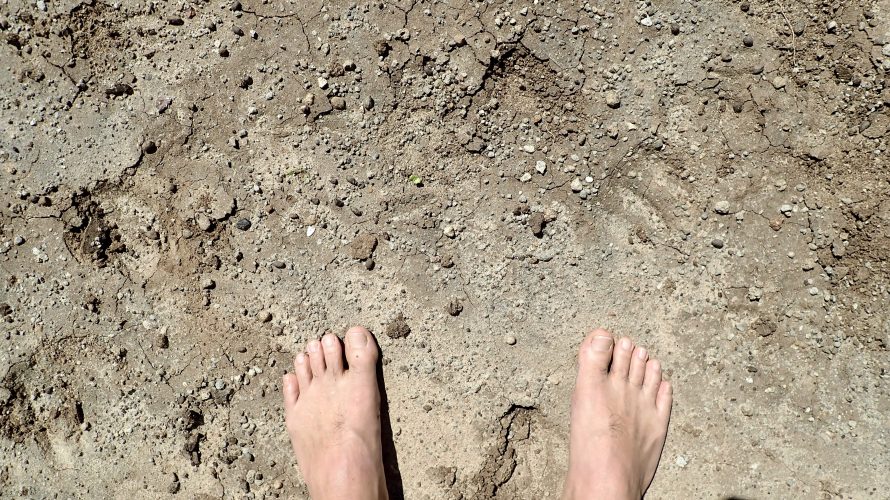
This article was written by Masatoshi Funabashi in T-pop News No.177, an e-mail magazine published by Sony CSL.
It is published here as information to think about the essence of the new coronavirus outbreak.
Topsoil and Viruses
Between waves of the virus
From the middle of February, I went to the southern part of Africa on a business trip for a research project. In Japan, fewer than 40 people had been infected with the novel coronavirus, another several dozen in Europe, and no reports in Africa at the time. However, due to concerns over the exponential increasing rate of infection, many large companies in Japan had already begun taking internal measures to prevent the unnecessary spread of infection. Just a few days after arriving in Africa, Sony gave notice of a ban on all subsequent travel overseas for business. While maintaining direct and discrete contact with Sony CSL, I closely monitored the spread of the virus and continued my research in southern Africa.
I had originally planned to travel to Italy and attend a symposium of the Food and Agriculture Organization (FAO) of the UN in the first part of March, but just three days before my trip, the number of newly infected people had increased by 1,000, so I hastily changed my plans and remained in southern Africa. After that, the increased number of cases for people in Italy and France infected by the disease continued to increase and had risen to over 10,000 people throughout Italy alone during the period planned for the symposium.
Italian colleagues sent me an email saying that I was still welcome to visit Rome, but I changed my plans and switched from working in mainland Europe to working in Stockholm via London. I made contact with local people concerned and made plans to travel in the middle of March, but in the last few days leading up, the number of cases for infected people in Northern Europe had increased dramatically. On my scheduled date of travel, the number of cases in Sweden had already reached 1,000 people. At the same time, a small number of scattered cases began to be reported of people infected with the virus in southern Africa, mostly travelers from Europe. I dropped in to a luxury hotel to make use of high speed Wi-Fi, where there was one western traveler who was reported as the first case of COVID-19 the day after I left the country.
In the transfer hub of South Africa, they had just begun closing down their national land borders. Airline carriers and even countries such as Singapore used for stopovers had already decided to take measures that put CAs who had stayed in Japan under isolated quarantine for 14 days. Wanting to avoid the crowds of people escaping from Europe as much as I could, I found my way back home on a flight via Dubai where there were relatively more vacant seats. At one time during my return flight home, I suddenly glanced over at the position of the aircraft on my monitor and noticed that we were directly over Wuhan. Just as I arrived back in Japan, all the EU countries were rushing one after the other into lockdown mode.
Now in order to self-isolate and monitor my own physical condition, I am writing this manuscript on a beach in Shonan(60km south of Tokyo) where the south wind blows. This is partly because the novel coronavirus cannot ride on the winds over the sea.
Symptomatic treatment and fundamental measures
When I was monitoring information about the novel coronavirus, I hardly saw any specific measures announced by individual governments. I only checked information about the incubation period and viral shedding as reported successively. In the past, when I was studying veterinary science, I once had the opportunity to analyze a genome of a virus that belongs to the same retrovirus group as the coronavirus [1]. Understanding the life cycle in order to conduct viral replication experiments, it was quite clear what needed to be done to prevent my own infection.
There was no other way to escape the wave of COVID-19 spreading from Asia towards Europe and Africa and get back to Japan without stepping over the crest. And since I had already left the country, it seemed far better for me to delay my return. That was because from the structure of air traffic routes, it was clear that southern Africa would be the last place on earth where the delayed transmission of COVID-19 would reach, and by virtue of buying more time, I could draw out the maximum possibility that the virus would mutate into an attenuated strain through its repeated passage. I also expected the region of Japan to enter into a period of convergence. At a bare minimum, by not returning home quickly before the trend in Japan had settled down, I could avoid becoming a member of the infected cluster or bringing back any other possible infectious diseases from Africa which might put an additional strain on medical facilities.
In order to execute my plan of return, right after Japan passed the initial stage of being a high-risk country and the number of infected people leveled off, it was still necessary to determine the correct timing of when to return by way of countries and airplanes that would likely have the largest percentage of people who were still in the phase before viral shedding begins. I calculated this window of opportunity to have a short time span of 2-3 days in the middle of March and adjusted my scheduled flights to match this by a matter of hours. I would like to express my sincere gratitude to the staff at Sony CSL for responding with such polite attention to detail in this regard.
At the same time, I was anticipating that any measures taken publicly at some point when an overshoot (explosive rise of infected people) occurred would all be symptomatic measures to protect the lives of citizens and prevent a medical breakdown in the short term. The main measures that governments are currently calling on their citizens to take action are roughly classified as follows.
・self-isolating, social distancing, restricting movement
・complete prevention of contamination through such things as washing hands, gargling, using masks, getting proper ventilation, cleaning surfaces, and the air tight sealing trash bags.
・closing down schools and shops that are not directly related to a lifeline such as restaurants and movie theaters, banning events from being held
・developing therapeutic drugs and vaccines
So, I wonder how many of these are providing fundamental measures to prevent the outbreak of COVID-19 in the first place.
The same types of issues apply to sustainability initiatives. Take a look at the SDGs (Sustainable Development Goals) set out by the United Nations. Among the 17 goals and 169 targets, I wonder how many would address the root cause based on the whole causal relationship of events.
SDGs (English): https://www.un.org/sustainabledevelopment/sustainable-development-goals/
Other than issues that can be closed and improved on within our own cultural sphere, such as education and gender equality, do you realize how almost all the targets, particularly those in fields related to natural resources and ecosystem services, can be set as goals and indexed as symptomatic treatments? Problems with strong social-ecological complexity, such as poverty, hunger and health, almost all simply set desired target values.
This primarily reflects the difficulty in managing the complexity of natural ecosystems, and there is a long history where specialized science has continually failed in the management of comprehensive environmental issues. At Sony CSL, in contrast to the strict science based on closed systems, the goal has always been to develop a methodology that includes management of open complex systems [2]. The historical significance of this challenge is firmly established.
Let’s take a look, for example, at the East India Company (EIC), formerly established in the period of British colonial India. The EIC, which was just one company, had stronger financial and military power than the UK, and even had its own judicial system with power to enforce the death penalty. And key positions in the company that governed those important powers could be bought by individuals who had money, regardless of their origin or level of expertise. In a word, it was an organization completely run by amateurs.
A number of history books will tell you what sort of global confusion and disasters occurred by such a company. The most important thing that came from the failure of the EIC was that the Western world developed an appetite for more “expertise”. These days, a Ph.D. is a required qualification for all academic studies. Not only that, but most important offices at major European and American companies as well as government agencies and international organizations are run by people who hold a Ph.D. A new world order has been created by professionals who have received a strict specialized education and achieved excellent academic results. And what happened to this changed world?
The top students at premier universities in the US were hired by the Pentagon to take charge of developing weapons in order to increase national defense. And a great idea was born out of this. The proposal of selling slightly outdated weapons to other countries and use the proceeds from sales to develop even more highly advanced weapons, thereby maintaining a competitive advantage of national defense and diplomatic power — an idea that was adopted and sustained by nations in the blink of an eye. Now we have no idea exactly how many weapons of mass destruction have been created worldwide as a result.
I simply presented this example of human society for the sake of simplicity, but the natural ecosystem is yet another example of a complex open system. Agricultural chemical pesticides developed in Japan were exported to Southeast Asia and used in large quantities, and within the blink of an eye, insects with high resistance to these chemicals emerged and were carried by monsoon trade winds back over to Japan. This type of unthinkable retaliating return (a wicked problem) occurs as a common daily event in complex systems. In front of such flexibility and resilience of this type of living world, systems with only a specialized body of knowledge fall behind in management.
Just like a yacht that easily capsizes from a change in wind direction, no matter how sophisticated a ship may be, without any ability to “read wind direction”, navigation in the complicated changing world of nature will assuredly remain impossible.
The first thing I did as soon as I saw movement of the coronavirus approaching southern Africa was to self-isolate in a place that practices regenerative agriculture surrounded by an ecosystem with a healthy topsoil. Hundreds of cattle, sheep, pigs, chickens, etc. were grazing in well-controlled pastures, digging up soil by natural instinct, covering their bodies in mud, and trouncing on withered grass. In following years, these grasslands will become richer and regenerate, and trees that are scattered throughout will also become more resilient. The whole group of animals is very strong and healthy without the use of hardly any medicine or nutrients. Occasionally, a veterinarian stops by to check in on things and leaves after only having a friendly chat.
In regards to why it is not a symptomatic treatment but a fundamental measure that corresponds to an ability to “read wind direction”, let’s make ourselves a virus and think about things from that perspective.
Thinking like a virus
Hello, I am a virus. I don’t yet have a name. As soon as I was born, I was a virus. It seems as if a virus is a weak entity that cannot exist on its own. Moreover, it is not even clear whether I am a living thing or a mere substance. But there is a host who will take good care of me. It appears to be called an animal. Our household can prosper thanks to this host’s help alone… we should cherish it. It would be outrageous to hurt it. It’s more than enough to simply borrow a small patch inside the host, moderately increase in number and then get out. In order to prevent from being too much of a nuisance to our host, we will select calm and gentle fellows among us and increase in number through replication. There is nothing more pleasing than being allowed to use our own power so that our dear host becomes stronger.
(※ in the process of evolution, it is known that some biological species have acquired new capabilities through viruses. In addition, varieties of viruses coexist in bacterial flora that occurs naturally on the human skin and in intestinal bacteria, which is considered to be a contributing factor that supports human health.)
Nevertheless, many hosts these days are in poor physical condition. Getting sick all over the place and not being able to rely on immune cells, our natural enemies. Among everything in nature, this animal seems to be in trouble because there appears to be too many of them. Right then is where a voice could suddenly be heard from out of nowhere.
“Since it’s so weak, it’s ok to kill it…”
I was so surprised. Killing a host is ridiculous! Isn’t there some way to live together regardless of how weak or sick the host is? Then the voice continued.
“Hey virus, that’s your own wishful thinking. There are rules of law in the world of nature. You are someone living in that world. What happens if the number of sick animals increased too much? Animals, when you get right down to it, live by eating plants. Plants support the circulation of matter in this world, which allows the coexistence of living creatures on the surface. Furthermore, in order for plants to regenerate healthily, they must be eaten by animals and pass through their digestive system. This is necessary for the timely distribution and supply of phosphoric acid / potassium and microflora that drive the growth of ecosystems. Unless strong and healthy animals are running in herds across grasslands, desertification will steadily progress, particularly in arid and semi-arid regions that account for nearly 40% of the world’s land mass. You have no right to destroy the exquisite balance of this world. Obey the laws of nature!”
OK, alright, I understand. Up until now, I’ve tried my best not to bother my host, but recent hosts are so weak that I don’t really know very well what bothers them. I’ll try in my own way to make various changes and do my best to maintain an even better balance.
Just at that moment, the host was suddenly killed. It seems that it was an animal called livestock kept by a species called human. It appears as though these humans, who should be called the hosts of the host, cut down forestland to create a facility to increase animals and tightly pack them in and used various types of pharmaceuticals. It’s no wonder the host seemed to suffer. Even so, our family is already scattered. Offspring these days don’t even resemble their parents. I wonder if there is any way to get out of here…Wait, I know what we should do, let’s try and ride with that other human over there for a while.
Somehow, it worked. This human body is amazingly comfortable. There’s nothing getting in my way. This guy is weaker than the original host. Well, I can’t bring myself to the point of killing my new host, but I heard the voice of nature, and this thing called human is quite persistent. No matter how many of them die, there is no end to how many more are around, and when they know we can cause infection from their coughing and sneezing, they try to prevent diffusion by socially distancing themselves from one another. If that’s the case, then there should be no problem of becoming extinct as long as we go on a rampage for a while. At lease for a short while, I’ll savor the taste of what it feels like to have everything in the world. Once humans have run out of options, then I’ll pay some respect to my new host and have a much more calm interaction. After all, it’s the hosts who have given us a name for the first time in history.
Just at that moment, I heard the voice of nature again.
”That’s fine. Humans, animals and plants are all part of the same life. Besides, microorganisms are the living ancestors to life. There is no change in your mission as a virus. This is because you have been the driving force of evolution behind all living creatures since the dawn of time. You probably haven’t realized it yet, but your ancestors meddled in things to incorporate various gene sequences even when the genome of human beings was made…”
With the above conversation, the author tried to present how a typical scenario of an emerging infectious disease with a zoonotic host range would be translated into human language from the perspective of a virus in the world of nature. The virus is not a tyrant or butcher. It is a humble member that supports the earth’s biosphere and has a steadfast role inside the ecosystem. So where do you think the underlying causes are to be found, which are making the situation run out of control?
Many viruses are discharged from places such as the respiratory and digestive tracts of animals. And where does that ultimately wind up? Immediately at your feet, soil is spreading in the world of nature. Let’s make our way into the microscopic world and see what is happening on the surface of soil where the virus will surely land on this planet earth which has gravity.
The structure of topsoil
The topsoil, especially the first several tens of centimeters of topsoil from the ground’s surface, is packed with mechanisms by which living creatures have evolved from the sea onto land over a very long period of time. Extremely intense UV rays fell down on the surface of primitive Earth where no single kind of living creature could make landfall alone. Somehow managing to bring the sea environment that was the cradle of life onto land, plants travelled for 500 million years in time up the water basin while covering the surface of the earth, creating the current topsoil structure into a form that is precisely linked to the composition of the atmosphere and natural water circulation. Using the topsoil as a medium, plants synthesize organic matter, the primary source of nutrition for all terrestrial organisms, from air, water, sunlight, and inorganic substances. These plants are then consumed by animals and fungi through various food chains. Moreover, by returning to the topsoil as a variety of molecular compounds, a buffering / regulating function against various environmental changes based on biochemical diversity is exhibited.
(※ particularly in semi-arid regions, the condition of only a few millimeters of the ground surface can greatly affect the permeability of the soil, and this greatly influences the soils functions being exhibited inside.)
One disease does not spread so easily in a complex environment with developed topsoil. First of all, most pathogens are adsorbed due to the physicochemical properties of the topsoil. Dust in cities soars up whenever the wind blows and does not settle down very easily, but it is caught up in forests by moist, porous soil and clean air is preserved. The soil is home to many microorganisms that are jostling around, being exposed to the highly bioactive chemical substances they produce, and in the blink of an eye, pathogens are absorbed into a web of multiple competitive and symbiotic networks. It has been shown that if the diversity of plants has risen above a certain level, microbial diversity will increase in orders of magnitude, and their astronomical number of genes will work in concert with each other as a whole. Moreover, it has recently become clear that a variety of viruses that are coexisting with plants and microorganisms play an important role as the conductor of an orchestra that organizes the whole.
(※ In addition to these pathogen control functions, various functions such as the production and decomposition of organic substances, adjustment of water storage and permeation, filtration of impurities, and control of flooding and erosion are called the soil regulation service.)
I suppose you may already know this. When viruses are kept cool, for example, on top of metal or plastic man-made objects with low chemical and biological activity (environments with little organic matter to feed on by other microorganisms), or kept in confined spaces where they do not spread out and dilute, they have a tendency to survive for long periods of time, exhibiting the same type of material aspects of a crystal. However, they are not that strong when exposed to microscopic soil environments that strongly receive the physicochemical effects from such things beginning with sunlight and water, and interact with other organisms (particularly degradation caused by RNA decomposing enzymes of which a lot are even located on the surface of our hands). A virus in and of itself is a simple structure where nucleic acid is packaged inside a few proteins and a membrane (envelope). If placed on a human-sized scale, it is much like bivouacking in light clothes among the mountains swarming with ferocious wild animals and where fierce rainstorm winds blow violently.
(※ at the present time, even the most stable virus, such as the norovirus that causes food poisoning, there have been no confirmed cases where a virus with human host proliferates in soil. However, there are a countless number of viruses that exist and live together symbiotically with various plants, small animals, bacteria, and fungi in the soil, helping to support a variety of soil functions. Only viruses that have co-evolved with plants, such as the tobacco mosaic virus, can remain stable in soil for any extended periods of time, and the host range is far removed from human beings.)
Furthermore, maintaining a healthy topsoil and diversity of microorganisms based on it are indispensable prerequisites for the normal operation of the human body’s immune system. The indigenous bacterial flora that protects our epithelial and mucosal surfaces, which is the routes for virus transmission, are naturally made healthy by coming into contact with various soil bacteria. In other words, the normalized behavior of our immune system is based on the premise of always being subject to moderate disturbances from the outside.
(※ academically speaking, it has been formulated as the Hidden Reef model, a model that shows a comprehensive superiority of environmental conditions over genes related to the state of health [3].)
On the other hand, by having a sterile environment with no introduction of various antigens that exist in the natural world, and where bacterial diversity in the skin and intestines has been remarkably reduced by using pharmaceuticals to create such an environment, it has been shown that the immune system self-destructs and various inflammatory and allergic diseases will develop.
The immunity of livestock who have been jam-packed into rooms without any lights deteriorates because of stress, and antibiotics are frequently used to prevent bacterial infections. This is almost the same thing as drinking down cold medicine in order to shove your way onto a crowded commuter train. In the microscopic world, these are conflicting environment being suppressed by medications, in which a huge number of viruses and bacteria both exhibit their pathogenicity to their hosts without building the original functional symbiotic system that should behave together as a single organism. It is actually suppressing the natural mechanism used to weed out unhealthy specimens in ecosystems. The thing to do in such instances is not blame the bad guys. Instead, shift the entire circumstances into an environment where no bad guys will appear.
Consequently, avoid all direct contact with infected people and other harmful host organisms, then arrange a soil environment where a variety of microorganisms grow that can be used as an inner moat to improve the normalization of our own immunity, and an outer moat that exhibits absorption and regulated functions of various pathogens including viruses -This, to the best of our ability, is the most ecologically effective infectious disease control measure we have. Some examples of lifestyle changes in which such fundamental measures can be implemented will probably include locally-produced, locally-consumed, and environmentally-regenerative food production, and rural-decentralized types of residency supported by multiple renewable energy sources and connected by information and communication technology [4].
Maintaining topsoil that is healthy, introducing the circulation of plants and animals to support it synergistically, and utilizing the presence of infectious diseases and parasites to maintain them at high standards with minimal effort. No other fundamental solution exists apart from bringing those cycles and balance of nature back to the core of human industrial activity.
Seawater and mucous membranes - If I road on the Diamond Princess -
Although we know the side benefits of healthy topsoil, it is not that easy to find in urban life, and even harder to find onboard a cruise ship. But even in such a case as this, I would like everyone to remember the evolutionary move onto land by living creatures. Soil bacteria originated from marine bacteria. The relationship between the sea and mankind as an animal are both far and near. If anything, the fact that we walk upright on two feet in and of itself tells a story of how we depended on the marine environment until very recently during the evolutionary process that led to human beings.
・the unique fat composition that allows newborn babies to float on water.
・the difficulty in acquiring food in forests and grasslands by anything other than ferocious carnivores, high protein nutritional requirements.
・the difficulty of survival in forests and grasslands before the development of civilization, the lack of fighting appendages such as horns, claws and fangs.
・bipedal walking with a heavy load under the force of gravity, degeneration of the tail which is used as a counter-balance for land-based motion.
・the way in which a body’s hair matches the same direction as the flow of water rather than the direction of gravity.
・the unique shoulder-arm motion structure that can grab objects and toss them over the water’s surface with an overhand throw.
・the clumsily degenerative state of toes normally used to skillfully climb trees, toenails that are not as developed as hooves which can travel long distances on grasslands to escape carnivorous predators.
・the running speed in the lowest category alongside pigs that is no match to other animals, the fact that climbing steep rocks is better than many animals.
All of these traits suggest that during the emergence of Homo sapiens, tide pools protected by seaside cliffs were an important evolutionary cradle of life.
Consistently from the beginning of evolution, the body surface mucous membranes of living organisms have evolved under the premise of seawater stimulation. Even though we were once a land animal that has migrated deeply inward onto land, if we once again re-adapted to the seaside environment during the tens to millions of years over the course of Homo sapiens’ birth, our eyes, throat, digestive tract, and immune system will still not have forgotten the benefits of seawater. This type of theory was developed in the past by René Quinton who came from the same era as Pasteur, and even in French pharmacies today, Plasma Quinton, an isotonic liquid having a chemical composition corresponding to seawater, is still made commercially available for use as an immunostimulator. In the same era when Pasteur invented heat sterilization and vaccine techniques that are still in use to this day, Quinton investigated how to raise the overall level of health, not local symptomatic treatment, but by preparing the body’s internal environment with seawater, a medium where life generation occurs.
In fact, I will often take students supporting my research of Synecoculture to go for swims in the ocean after farm work. Whenever skin is hurt by insect bites or cuts from being scraped by grass, trends can be seen where the skin mends after being covered with soil bacteria and soaked in seawater and the immune system normalizes. Everyone who has allergies such as hay fever, have reported being completely cured or a significant improvement in just one year’s time. Also, my grandmother said they used to draw up fresh seawater to make a salty broth in place of miso soup during times of food shortage both during and after the war. She said she was born in weakest condition of all her brothers and sisters, but she was healthy until her late 90s, and even after she turned 80, she went to a pool and kept a record of the distance she swam, and in a couple of years, she swam far enough to circle Japan.
If I managed to live beyond my own means and were able to ride aboard the Diamond Princess, I would first off want to gracefully go out to have a seawater bath, but if that wasn’t possible, I would probably draw up some seawater and then after filtering it slightly, drip it into different mucous membranes such as my eyes about three times a day. Before going to bed, I would moisten my throat with seawater and use seawater for gargling and washing my hands.
For RNA viruses that have fast mutation rates, sooner or later, the development of therapeutic medicines and vaccines can only play a temporary role. Playing a game of cat and mouse with the influenza virus that mutates and becomes prevalent every year, explains the relation between symptomatic treatment and the virus. On the contrary, the laboratory environment itself creates an unhealthy closed system similar to large-scale highly packed livestock, and in some cases, pathogen transfer experiments between animals that do not normally meet in nature have led to the emergence of a new type of virus, such as the immunodeficiency virus causing simian AIDS. Also, the Spanish flu, which became the deadliest pandemic in modern history, is said to have been caused by the unsanitary and densely compacted trench life on the front line, and it is estimated that the death toll of soldiers increased the virus’s ferocity by losing its chance of being attenuated in the living body. For civilizations that ignore the historical background and only cut to the chase of problems that are currently happening and promoting symptomatic treatments, ecosystems are being designed in a direction that increases instability caused by inevitable and acutely intensifying viruses (as a typical wicked problem). This is not merely limited to the scale of viruses. Things such as dessert locusts, due to decreases in the biodiversity of their habitat and an increase in population density, mutate into a gregarious phase and become a locust plague, where the mechanism of rapid changes in herd dynamics which devour a vast amounts of agricultural land are mathematically common with the global disease outbreak.
Overcoming temporary bias and confusion, in order to allow a virus to form a broad symbiotic system with other organisms, and play a healthy active role as a member supporting various ecosystem services, it will be necessary to clarify the diverse roles of viruses in ecosystem-based and environmental-based open systems such as the soil and ocean, where nature shows us how. This is one of the important themes in natural state life science (i.e., in natura life science [3]).
In this way, precious topsoil and seawater provide a solution free of charge that includes a fundamental causal relationship on the scale of evolution. Connecting them together is a water cycle that links rain, groundwater, rivers and oceans [5]. The thing that destroys this entire process from the order of the most important topsoil is current monoculture-based agriculture farming and desertification resulting from uncontrolled grazing.
The value of megadiversity itself
The importance of biodiversity has been cried out loud for decades up until now. Unfortunately, people have been too busy with trying to put the food on their plates that they have not gotten the message. Even people who are somewhat wealthier have not been listening. Biodiversity is implicitly being associated with charitable enterprises and nostalgia for the past landscape. The importance of taking this on as a truly historical issue for mankind keeps getting postponed indefinitely as something that cannot be contended with immediately due to economics and complexity.
COVID-19 is merely an actor who by happenstance has helped to manifest the issues that mankind has been postponing collectively for years. Just how sincerely and deeply people get the message is a touchstone for measuring the depth of mankind’s wisdom. Even in times when shops are shut down, national borders are closed off, and we can’t be present with loved ones in their final moments, there is still something we should all be made closely aware of.
That is biodiversity, the source from which all life has been born. For some reason, a single species on its own could not be established merely by physically increasing in number. This is a fundamental constraint of the universe, and a task giving to all living creatures, great and small. Why are there so many different life forms? Why do no wasted lives exist? This infinitely proliferating idiosyncrasy that cannot be fully comprehended by the human mind nor covered by big data is something I would call megadiversity.
Until now, diversity has been something that has only been professed for somewhere in the distant future. But now everyone is feeling the effects of it first-hand. Things we are rapidly losing, insecurity, pain, money, toilet paper, smiles, and even hope. It is megadiversity that has continuously supported them all for a long time without ever saying a word.
A global pandemic has simultaneously created new opportunities in different parts of the world. We have been temporarily withdrawn from capitalistic competition. We are sharing more time, culture and creativity with one another based on people’s solidarity. We are rethinking the true rate of food self-sufficiency and providing more support for rural agriculture. And we are protecting those in society who are vulnerable and calling out for a global ceasefire.
As for the reason why COVID-19 has appeared, in places where civilization and nature are once again being intertwined, I wonder if there isn’t a new key hidden in the background.
References
[1] (Sony CSL 30th Anniversary Journal) “Curiosity makes the future: The future of humanity as wildly imagined by Sony CSL researchers”, Sony CSL, edited by Shodensha (2019).
[2] Tokoro M. “Open Systems Science: A Challenge to Open Systems Problems” First Complex Systems Digital Campus World E-Conference 2015, Springer Proceedings in Complexity (2017) pp. 213-221
[3] Funabashi M. “Human augmentation of ecosystems: objectives for food production and science by 2045” npj Science of Food volume 2, Article number: 16 (2018)
[4] Funabashi M. “Declaration of Meta-Metabolism” ed. Fumio Nanjo, Academy Hills Mori Art Museum Planning Cooperative, “How do people live tomorrow-updating our vision of the future”, NTT Publishing (2020) pp. 50-72.
[5] Funabashi M. “Water and Ecosystem Cycles Mediated by Plant Genetic Resources for Food and Agriculture” Genetic Diversity in Plant Species – Characterization and Conservation, Mohamed A. El-Esawi, IntechOpen, DOI: 10.5772/intechopen.79781. (2018)
※Some important considerations in this article are based on conversations with Mr. Allan Savory
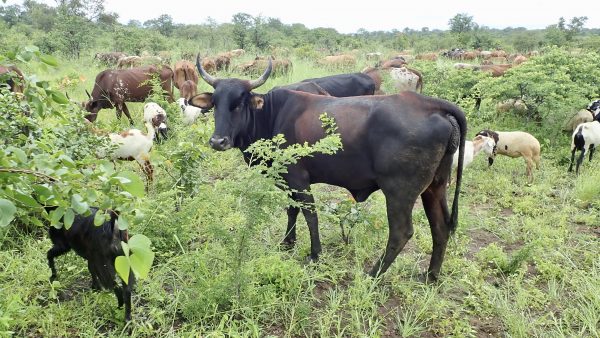
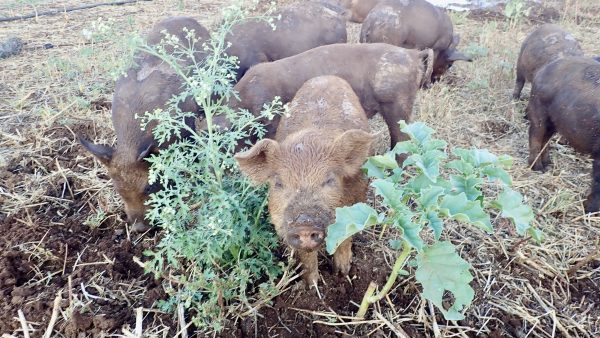
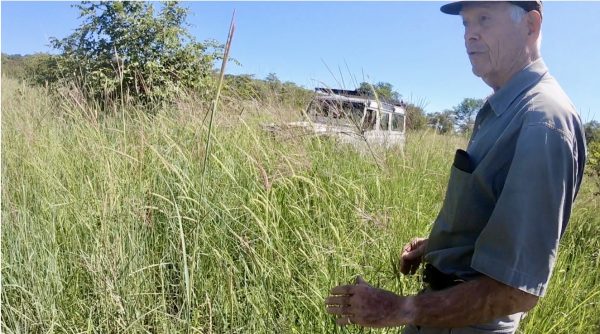
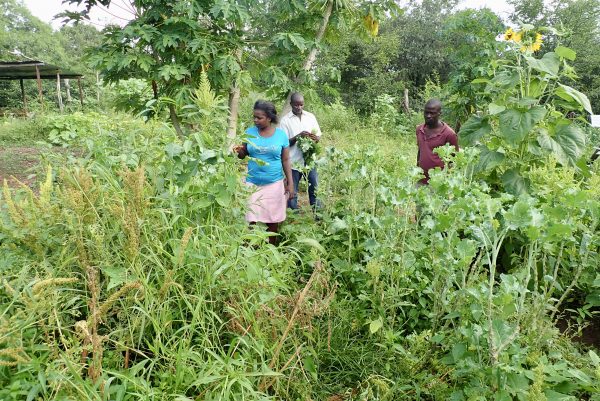
-
前の記事
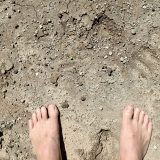
表土とウイルス 2020.03.28
-
次の記事

Terre Arable et Virus 2020.04.13